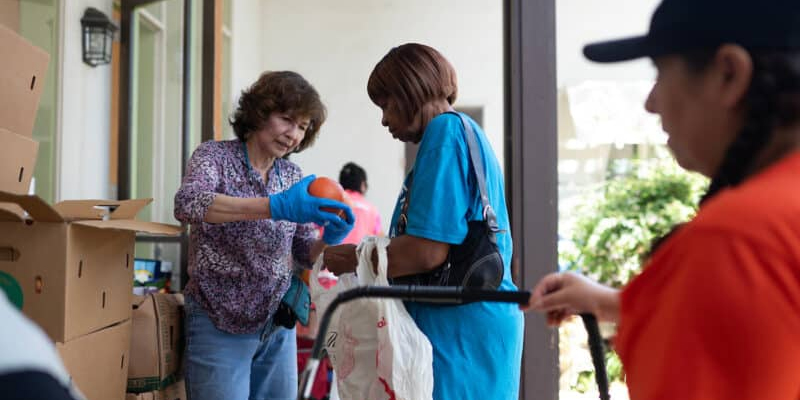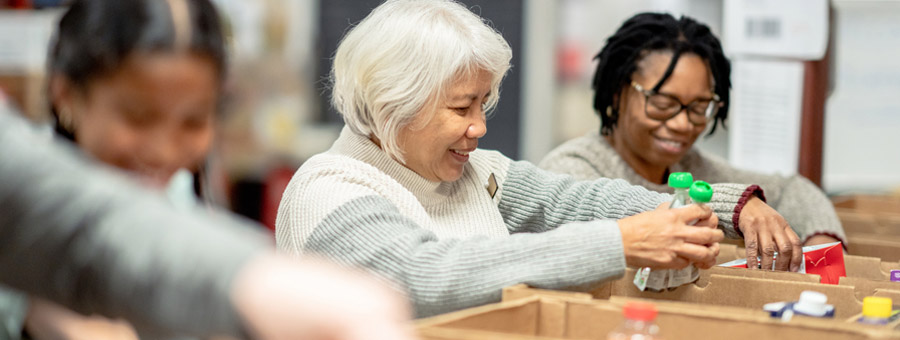Despite living in one of the wealthiest regions of the country, many children and families in California’s San Mateo and Santa Clara counties go without necessary health care services and support.
That’s why Stanford Medicine Children’s Health takes a different approach to community benefit — by shifting the spotlight from hospital-led programs to partnerships with trusted community-based organizations already doing the work to address community needs.
Nonprofit hospitals like Stanford Children’s have special obligations to their communities in order to be tax-exempt. In addition to conducting a Community Health Needs Assessment (CHNA), they must document the ways they invest in and support their communities.
Instead of building new programs and focusing on institutional initiatives, Stanford Children’s provides nonprofits and Federally Qualified Health Centers grant funding to support programs that align with priorities identified in their CHNA.
Strengthening what already works
“Our philosophy is that we already have a really good foundation of community organizations doing great work,” said Joey Vaughan, manager of community partnerships and community benefit. “We don’t really need to recreate that wheel.”
The decision to collaborate with local organizations reflects the broader mission of Stanford Children’s Government and Community Relations team to engage and work alongside community partners that improve the health of kids beyond the hospital setting.
Through a $2 million fund from hospital operating dollars, the hospital’s Community Investment Grants Program provides funding directly to community initiatives to ensure resources are available where they are needed most.
Previously, funds have been allocated to both internal partners working on community benefit projects and community organizations. In the upcoming cycle, 100% of grantmaking dollars will go directly to local partnerships.
“The spirit of community benefit is to improve health beyond the walls of the hospital,” said Michele Lew, senior vice president and chief government relations officer. “By investing directly in local organizations, we’re not only building health equity — we're also building trust, shared purpose, and long-term impact alongside our community.”
Not only has the program earned strong support from hospital leadership and community partners, but it also reflects a growing statewide emphasis on hospital accountability and direct investment in local organizations. In fact, a 2022 policy proposal in California explored requiring hospitals to dedicate a portion of their community benefit spending to community-based organizations, a practice Stanford Children’s had already begun implementing.
“The grant program helps us distinguish between two pillars of our community benefit work: the hospital’s direct efforts and the proactive investments we make through local partnerships,” Vaughan said. “Community benefit encapsulates both of those concepts.”
Aligning investments with community needs
At the core of Stanford Children’s community benefit strategy is the CHNA, conducted every three years to guide funding decisions and ensure alignment with the region’s most pressing health challenges. Through its current funding cycle, the hospital partnered with organizations working to improve access to care, mental health, economic stability, and maternal and infant health.
“What we feel our community needs is direct investment now to be able to get resources out into the community in a matter of months, not years, through established programs already doing this work,” Vaughan said.

Each cycle, Stanford Children’s typically funds around 15 programs, granting each local organization $75,000 to $300,000. This year, they introduced an "intent to apply” process to improve access and ensure early alignment with funding priorities — a move that also helped broaden and diversify the applicant pool.
From there, the hospital uses a balanced approach to fund organizations based on needs identified through the CHNA, underserved populations, and geography. The team conducts research to determine which organizations are working to address CHNA priorities, which can impact the populations that need it most, and which areas would benefit from funding and support to successfully address community needs.
Investing in food security
One of the hospital’s most effective partnerships began during the pandemic with Second Harvest of Silicon Valley.
Vaughan and the community relations team knew they needed to help address increased food insecurity across their service area and provided emergency funding to Second Harvest. This was the first time the two entities had connected on community needs. Through these efforts, it became clear that there were more ways the two organizations could work together to combat hunger in Silicon Valley.
“The beauty for us is that we were able to help provide people with the resources they needed while building a relationship that could continue to support the organization and families in our service area,” Vaughan says.
Stanford Children’s donated $300,000 to the organization in its latest grant cycle and partnered with Second Harvest to build a closed-loop referral system to simplify the process for the nonprofit’s team.
“This partnership with Stanford Children’s — through both financial development and the development of a referral system through patient screening for food insecurity — reflects a deep commitment to health equity and a collaboration making a real difference," said Leslie Bacho, CEO, Second Harvest of Silicon Valley. “Food is medicine, and this partnership is helping families not only get by but truly thrive.”
Measuring the success
Success of these investments isn’t measured solely by clinical outcomes. The community benefit initiative is tracked by metrics that reveal broader impact: the demographic and geographic reach, the number of children and families served, and the value of services offered.
Through the grant structure, goals and metrics are created collaboratively with Second Harvest and the hospital to support mutual understanding. Vaughan and the community health team help build their metrics and evaluation criteria to ensure there is clarity of what they are doing and to demonstrate the program’s success.
“I think creating those metrics jointly is great for the partnership because it is more community-minded,” Vaughan said. “It makes their goals much more achievable and realistic because it’s not just us telling them what they have to do.”
Deepening the relationship
To deepen connections across organizations, the team implemented a cohort model that brings grantees together throughout the year to share insights, learn from one another, and explore opportunities for collaboration.
The partnerships are not intended to end after the grant cycle. Building trust and long-term goals have helped navigate challenging times and keep nonprofits engaged with the hospital.
Grantees can work with consultants provided by Stanford Children’s for technical assistance or sustainability facilitation to discuss their data and evaluation work. Community relations staff also manage partnerships as an entry point to the institution to make connections with other departments.
Knowing the purpose
Although the community investment grants are a cornerstone of Stanford Children’s community benefit initiatives, Vaughan recognizes other children’s hospitals may have different approaches.
To peers across the country, Vaughan offers this advice: “Everyone does amazing work and needs funding, so set your boundaries and create a program that is strategic and proactive. While community benefit is just one part of how we engage, it provides a strong foundation for building enduring partnerships and advancing health equity in meaningful, measurable ways.”



